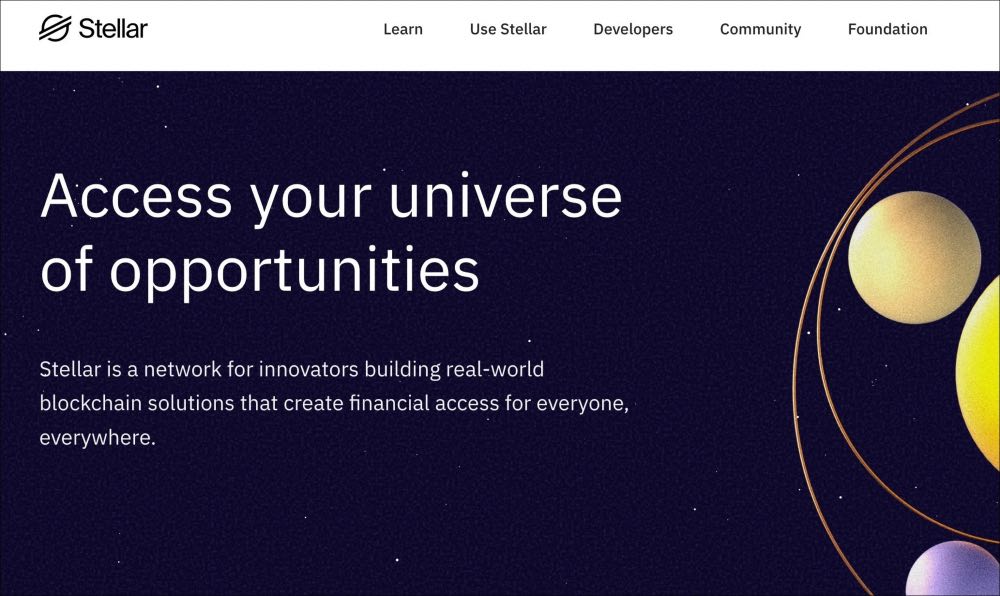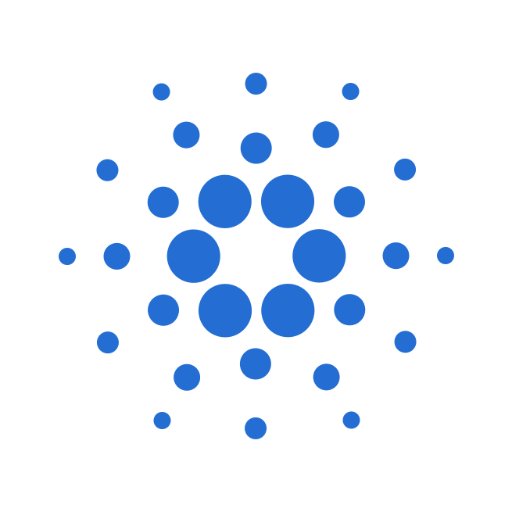Cardano (ADA) ile Stellar (XLM) karşılaştır Coin
Cardano (ADA) and Stellar (XLM) are among the top 30 cryptocurrencies by market cap. The respective platforms, Cardano and Stellar, are ambitious, constantly evolving projects. This article will give you a good idea of what these platforms and coins are so that you can see which of them can be a good investment for you.
What Is Cardano?
Cardano (ADA) is a native token of the Cardano platform. The platform functionality resembles Ethereum: Cardano is used for running smart contracts, building and hosting dApps, storing and managing data, etc.
 Cardano was created by one of the former Ethereum team members Charles Hoskinson. His intention was to create a platform with functionality similar to Ethereum but better in terms of scalability. Cardano is cheaper and faster than Ethereum. The latter plans to transfer from the PoW consensus protocol to PoS. On Cardano, the consensus is achieved through PoS from the very beginning.
Cardano was created by one of the former Ethereum team members Charles Hoskinson. His intention was to create a platform with functionality similar to Ethereum but better in terms of scalability. Cardano is cheaper and faster than Ethereum. The latter plans to transfer from the PoW consensus protocol to PoS. On Cardano, the consensus is achieved through PoS from the very beginning.
The project started in 2017 and quickly gained mass attention, becoming one of the most promising crypto platforms. As of August 2022, Cardano occupies the 7th position by market cap. Cardano had a number of collaborations with big businesses, financial organizations, etc. The token is available on many big exchanges.
What Is Stellar?
Stellar (XLM) is a native coin of the eponymous P2P network. The platform aims to allow users to exchange fiat currencies, cryptocurrencies, CBDCs, and other types of assets with each other. More than that, Stellar has an inbuilt decentralized exchange and a crypto on-ramp. Another purpose of Stellar is a connection between financial institutions.

The project was conceived in 2014 by ex-Ripple employee Jed McCaleb and the lawyer Joyce Kim. Their goal was to bring crypto to the mainstream by making transactions and exchange operations effortless. The target audience of Stellar is the developing countries with substantial unbanked populations and financial institutions that need convenient crypto on-ramps.
As of August 2022, the Stellar coin is available for trading on many popular exchanges. The price fluctuates around the 12 cents mark. The market cap exceeds $3 billion, making Stellar the 30th cryptocurrency with the most significant market cap.
Cardano vs. Stellar (table)
| Factor | Cardano | Stellar |
| The price as of August 2022 | $0.538 | $0.126 |
| Market cap as of August 2022 | $18 billion | $3.17 billion |
| Rank as of August 2022 | #7 | #30 |
| All-time high | $3.09 (September 2, 2021) | $0.875 (January 3, 2018) |
| Decline (compared to all-time high) | 82.7% | 85.7% |
| All-time low | $0.019 (March 13, 2020) | $0.000476 (March 5, 2015) |
| Growth (compared to an all-time low) | 2,673.7% | 26,227.5% |
| Popular markets | Binance, Upbit, MEXC Global, AAX, Coinbase Pro | P2PB2B, Dcoin, Coinbase Pro, Binance, Upbit |
| Platform | Cardano | Stellar |
| Consensus mechanism | PoS | SCP |
| Products | EMURGO | MoneyGram Access, Kelp, Freighter |
| Use cases | Smart contracts, dApps, data, financial operations | Means of exchange, DEX |
Cardano vs. Stellar (details)
The price and the market cap
Cardano has a higher price and a bigger market cap than Stellar. More than that, Cardano had the most significant spikes this decade, while Stellar had its highest price in early 2018. Both projects are influential, but Cardano's market performance seems to have more energy.
Popular markets
We can't say that Cardano or Stellar has an advantage by this parameter. Both coins are well-presented on multiple markets, including the most popular exchanges. You won't likely have a problem selling/buying ADA or XLM on any significant exchange.
Platform
Both assets are built on top of custom networks. Cardano had a unique architecture from the very beginning, while Stellar was initially built on top of Ripple. However, now, both networks are fully autonomous.
Consensus mechanism
From the technology side, the Stellar Consensus Protocol (SCP) is one of the most progressive consensus protocols in the blockchain industry. Unfortunately, it's not as well-spread as popular protocols like Proof-of-Stake and Proof-of-Work. SCP is harder to understand for the major public, and it can turn some people away even though SCP is a decent protocol. Cardano is based on PoS, a protocol known to every crypto enthusiast. It has many critics, but at least everyone knows if PoS is good for them.
Products
Cardano products are better for institutions, while Stellar focuses more on end users. Depending on who you are, you can prefer Cardano or Stellar.
Use cases
Stellar is working to help unbanked people make cross-border transactions and interconnect financial institutions. Cardano can be a platform for building any service, including the one that has features resembling Stellar's functions. We think that Cardano is more versatile than Stellar. It gives users and developers essential tools that can be used for millions of purposes. Stellar's appliance is more narrow.
| Company |
|---|
User rating
| 7 user review | 3 user review |
Cryptogeek rating
Trust Score
How it worksAbout
|
Cardano coin (ADA) is a cryptocurrency launched in 2017. The currency is based on the Cardano network. The leader of the dev team is Charles Hoskinson, an experienced developer who worked for Ethereum and BitShares prior to the launch of Cardano. Cardano is the first cryptocurrency to use academically peer-reviewed open-source code, which makes this project quite unique.
The consensus algorithm of Cardano is Proof-of-Stake. Cardano is usually praised for its high level of security and quick transactions. Cardano currency quickly gained value and became one of the top 10 cryptocurrencies by market capitalization.
|
Stellar is an open-source cryptocurrency network launched by non-profit Stellar Development Foundation. The currency itself is called Lumen (XLM). Some experts note that this asset has similarities with Ripple because of its quick and cheap transactions.
The Stellar network is guarded by the special contract that doesn't temporarily allow holders of big amounts of Lumen to sell it. Stellar works as an exchange platform where Lumen is used to pay a small exchange fee. The project has a high level of decentralization and provides equality for all of its participants. It has one of the biggest market capitalizations.
|
Type
| coin | coin |
Founding Date
| 2017 | 2014 |
Country
| International | International |
Languages
| No data | No data |
Team
| Public | Public |
Protocol
| Public blockchain | Public blockchain |
Current price (USD)
| 0.9030 | 0.3982 |
All-time high (USD)
| 1.3300 | 0.9381 |
Price change (24h)
| 1.99 | 2.72 |
Volume (24h)
| 74731914.04327 | 27889778.31125 |
Hashrate
| No data | No data |
Max Supply
| 45000000000.00000 | 50000000000.00000 |
Total supply
| No data | No data |
Circulating Supply
| 45000000000.00000 | 50001786886.69600 |
Transaction speed / Block time
| 50 | 2000 |
Transaction fee
| No data | No data |
Mining profitability
| No data | No data |
Algorithm
| Ouroboros | No data |
Proof type
| PoS | No data |
Fully premined
| No data | No data |
Smart contract address
| No data | No data |
Total coins mined
| 25927070538.00000 | 20223415802.00000 |
Is trading
| yes | yes |
Block reward
| 0.000000000000 | 0.000000000000 |
Block time
| No data | No data |
| Company | ||
|---|---|---|
| User rating | 7 user review | 3 user review |
| Cryptogeek rating | ||
| Trust Score How it works |
| About |
Cardano coin (ADA) is a cryptocurrency launched in 2017. The currency is based on the Cardano network. The leader of the dev team is Charles Hoskinson, an experienced developer who worked for Ethereum and BitShares prior to the launch of Cardano. Cardano is the first cryptocurrency to use academically peer-reviewed open-source code, which makes this project quite unique.
The consensus algorithm of Cardano is Proof-of-Stake. Cardano is usually praised for its high level of security and quick transactions. Cardano currency quickly gained value and became one of the top 10 cryptocurrencies by market capitalization.
|
Stellar is an open-source cryptocurrency network launched by non-profit Stellar Development Foundation. The currency itself is called Lumen (XLM). Some experts note that this asset has similarities with Ripple because of its quick and cheap transactions.
The Stellar network is guarded by the special contract that doesn't temporarily allow holders of big amounts of Lumen to sell it. Stellar works as an exchange platform where Lumen is used to pay a small exchange fee. The project has a high level of decentralization and provides equality for all of its participants. It has one of the biggest market capitalizations.
|
|---|---|---|
| Type | Type coin | Type coin |
| Founding Date | Founding Date 2017 | Founding Date 2014 |
| Country | Country International | Country International |
| Languages | Languages No data | Languages No data |
| Team | Team Public | Team Public |
| Protocol | Protocol Public blockchain | Protocol Public blockchain |
| Current price (USD) | Current price (USD) 0.9030 | Current price (USD) 0.3982 |
| All-time high (USD) | All-time high (USD) 1.3300 | All-time high (USD) 0.9381 |
| Price change (24h) | Price change (24h) 1.99 | Price change (24h) 2.72 |
| Volume (24h) | Volume (24h) 74731914.04327 | Volume (24h) 27889778.31125 |
| Hashrate | Hashrate No data | Hashrate No data |
| Max Supply | Max Supply 45000000000.00000 | Max Supply 50000000000.00000 |
| Total supply | Total supply No data | Total supply No data |
| Circulating Supply | Circulating Supply 45000000000.00000 | Circulating Supply 50001786886.69600 |
| Transaction speed / Block time | Transaction speed / Block time 50 | Transaction speed / Block time 2000 |
| Transaction fee | Transaction fee No data | Transaction fee No data |
| Mining profitability | Mining profitability high | Mining profitability low |
| Algorithm | Algorithm Ouroboros | Algorithm No data |
| Proof type | Proof type PoS | Proof type No data |
| Fully premined | Fully premined No data | Fully premined No data |
| Smart contract address | Smart contract address No data | Smart contract address No data |
| Total coins mined | Total coins mined 25927070538.00000 | Total coins mined 20223415802.00000 |
| Is trading | Is trading yes | Is trading yes |
| Block reward | Block reward 0.000000000000 | Block reward 0.000000000000 |
| Block time | Block time No data | Block time No data |
Social
Website
| www.cardano.org | www.stellar.org |
| Cardano | Stellar |
| Website | Website www.cardano.org | Website www.stellar.org |
|---|---|---|
| Twitter Cardano | Twitter Stellar |
Advantages
| Friendly Peer-reviewed technology Scalable | Improved trade volume The consensus protocol is fast Improved daily rates Constant upgrades |
Disadvantages
| Competitors in the same space Still in development Multiple chains | Strong competition from Ripple Too much focus on growing network No mining rewards |
Rating
| User rating | User rating 7 user review | User rating 3 user review |
|---|---|---|
| Cryptogeek rating | Cryptogeek rating | Cryptogeek rating |
| Advantages | Advantages Friendly Peer-reviewed technology Scalable | Advantages Improved trade volume The consensus protocol is fast Improved daily rates Constant upgrades |
| Disadvantages | Disadvantages Competitors in the same space Still in development Multiple chains | Disadvantages Strong competition from Ripple Too much focus on growing network No mining rewards |
Cardano (ADA) user rating is 4.3, based on 7 user reviews. Stellar (XLM) user rating is 5, based on 3 user reviews.
We also calculate the special Cryptogeek TrustScore based on the characteristics of each coin.
| We choose the winner based on our TrustScore Rating. Please remember, it’s still up to you which company to choose! How do we calculate Trust Score? |
As of yet, Cardano beats Stellar by most factors. Both projects seem to have strong potential, though. Probably, having both ADA and XLM in your portfolio would be a smarter move than choosing only one of them. The time will show which of these projects have a future. Now, as we have introduced these projects' main characteristics, it's time to decide which of them is better for you.
Cardano (ADA) and Stellar (XLM) are among the top 30 cryptocurrencies by market cap. The respective platforms, Cardano and Stellar, are ambitious, constantly evolving projects. This article will give you a good idea of what these platforms and coins are so that you can see which of them can be a good investment for you.
What Is Cardano?
Cardano (ADA) is a native token of the Cardano platform. The platform functionality resembles Ethereum: Cardano is used for running smart contracts, building and hosting dApps, storing and managing data, etc.
 Cardano was created by one of the former Ethereum team members Charles Hoskinson. His intention was to create a platform with functionality similar to Ethereum but better in terms of scalability. Cardano is cheaper and faster than Ethereum. The latter plans to transfer from the PoW consensus protocol to PoS. On Cardano, the consensus is achieved through PoS from the very beginning.
Cardano was created by one of the former Ethereum team members Charles Hoskinson. His intention was to create a platform with functionality similar to Ethereum but better in terms of scalability. Cardano is cheaper and faster than Ethereum. The latter plans to transfer from the PoW consensus protocol to PoS. On Cardano, the consensus is achieved through PoS from the very beginning.
The project started in 2017 and quickly gained mass attention, becoming one of the most promising crypto platforms. As of August 2022, Cardano occupies the 7th position by market cap. Cardano had a number of collaborations with big businesses, financial organizations, etc. The token is available on many big exchanges.
What Is Stellar?
Stellar (XLM) is a native coin of the eponymous P2P network. The platform aims to allow users to exchange fiat currencies, cryptocurrencies, CBDCs, and other types of assets with each other. More than that, Stellar has an inbuilt decentralized exchange and a crypto on-ramp. Another purpose of Stellar is a connection between financial institutions.

The project was conceived in 2014 by ex-Ripple employee Jed McCaleb and the lawyer Joyce Kim. Their goal was to bring crypto to the mainstream by making transactions and exchange operations effortless. The target audience of Stellar is the developing countries with substantial unbanked populations and financial institutions that need convenient crypto on-ramps.
As of August 2022, the Stellar coin is available for trading on many popular exchanges. The price fluctuates around the 12 cents mark. The market cap exceeds $3 billion, making Stellar the 30th cryptocurrency with the most significant market cap.
Cardano vs. Stellar (table)
| Factor | Cardano | Stellar |
| The price as of August 2022 | $0.538 | $0.126 |
| Market cap as of August 2022 | $18 billion | $3.17 billion |
| Rank as of August 2022 | #7 | #30 |
| All-time high | $3.09 (September 2, 2021) | $0.875 (January 3, 2018) |
| Decline (compared to all-time high) | 82.7% | 85.7% |
| All-time low | $0.019 (March 13, 2020) | $0.000476 (March 5, 2015) |
| Growth (compared to an all-time low) | 2,673.7% | 26,227.5% |
| Popular markets | Binance, Upbit, MEXC Global, AAX, Coinbase Pro | P2PB2B, Dcoin, Coinbase Pro, Binance, Upbit |
| Platform | Cardano | Stellar |
| Consensus mechanism | PoS | SCP |
| Products | EMURGO | MoneyGram Access, Kelp, Freighter |
| Use cases | Smart contracts, dApps, data, financial operations | Means of exchange, DEX |
Cardano vs. Stellar (details)
The price and the market cap
Cardano has a higher price and a bigger market cap than Stellar. More than that, Cardano had the most significant spikes this decade, while Stellar had its highest price in early 2018. Both projects are influential, but Cardano's market performance seems to have more energy.
Popular markets
We can't say that Cardano or Stellar has an advantage by this parameter. Both coins are well-presented on multiple markets, including the most popular exchanges. You won't likely have a problem selling/buying ADA or XLM on any significant exchange.
Platform
Both assets are built on top of custom networks. Cardano had a unique architecture from the very beginning, while Stellar was initially built on top of Ripple. However, now, both networks are fully autonomous.
Consensus mechanism
From the technology side, the Stellar Consensus Protocol (SCP) is one of the most progressive consensus protocols in the blockchain industry. Unfortunately, it's not as well-spread as popular protocols like Proof-of-Stake and Proof-of-Work. SCP is harder to understand for the major public, and it can turn some people away even though SCP is a decent protocol. Cardano is based on PoS, a protocol known to every crypto enthusiast. It has many critics, but at least everyone knows if PoS is good for them.
Products
Cardano products are better for institutions, while Stellar focuses more on end users. Depending on who you are, you can prefer Cardano or Stellar.
Use cases
Stellar is working to help unbanked people make cross-border transactions and interconnect financial institutions. Cardano can be a platform for building any service, including the one that has features resembling Stellar's functions. We think that Cardano is more versatile than Stellar. It gives users and developers essential tools that can be used for millions of purposes. Stellar's appliance is more narrow.

